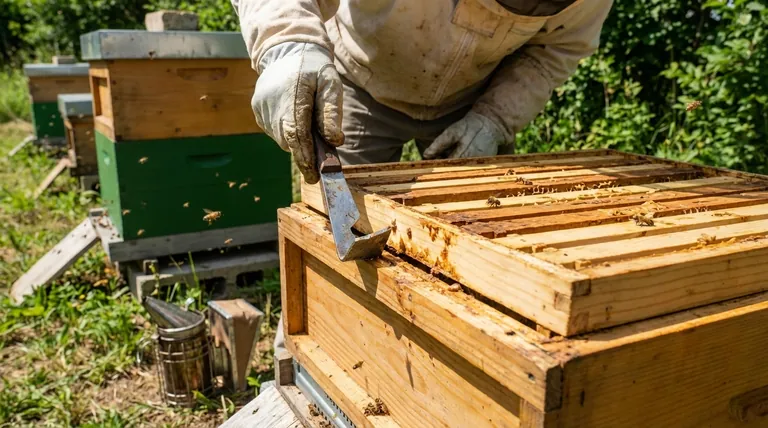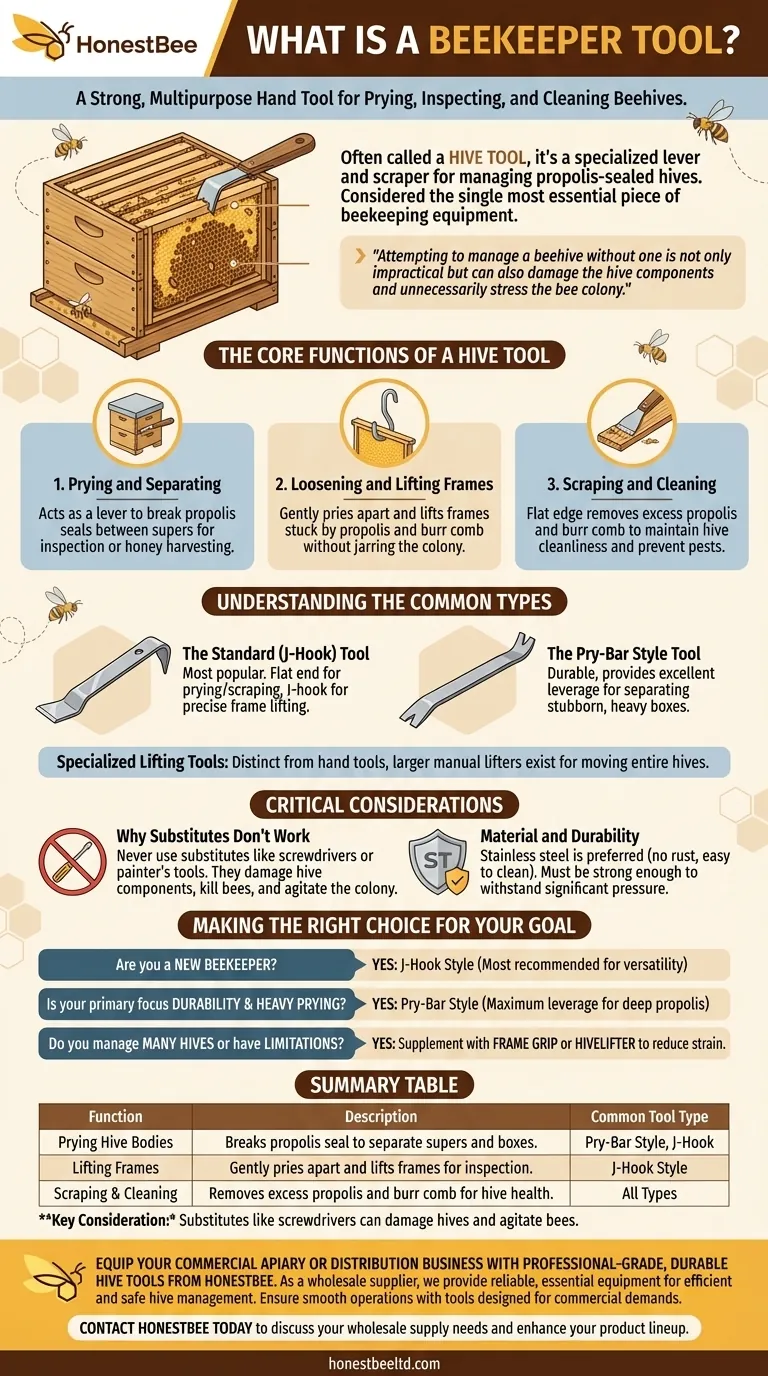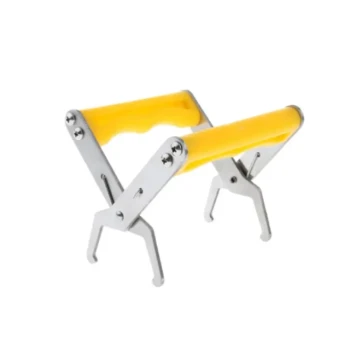In short, a beekeeper tool is a strong, multipurpose hand tool used to pry open, inspect, and clean beehives. Most commonly referred to as a hive tool, it functions as a specialized lever and scraper designed specifically for the unique challenges of managing a hive sealed by the bees' own propolis. It is widely considered the single most essential piece of equipment a beekeeper owns.
The hive tool is not merely a convenience; it is a fundamental necessity. Attempting to manage a beehive without one is not only impractical but can also damage the hive components and unnecessarily stress the bee colony.

The Core Functions of a Hive Tool
A beehive is not a simple box with a loose lid. Bees use a resinous substance called propolis to seal every crack and glue components together, making the hive a single, solid unit. The hive tool is designed to overcome this.
Prying and Separating Hive Components
The primary function of a hive tool is to act as a lever. The sharpened, flat end is wedged between hive boxes (supers) to break the propolis seal, allowing the beekeeper to lift them for inspection or honey harvesting.
Loosening and Lifting Frames
Inside the hive, frames holding honeycomb are spaced tightly together. Bees often build burr comb or use propolis to stick these frames to each other and the hive body. A hive tool is used to gently pry the frames apart and lift them out for inspection without jarring the colony.
Scraping and Cleaning
Beekeepers must maintain a clean hive. The flat edge of the tool is used to scrape away unwanted propolis and burr comb from frames and hive bodies, which helps with future inspections and prevents pests from finding places to hide.
Understanding the Common Types
While they all serve the same purpose, hive tools come in a few common variations.
The Standard (J-Hook) Tool
This is arguably the most popular design. It features a flat, bent scraping blade on one end and a "J" shaped hook on the other. The flat end is for prying and scraping, while the J-hook is exceptionally useful for hooking under a frame's top bar to lift it out of the box with precision.
The Pry-Bar Style Tool
This is a simpler design, resembling a small, flat crowbar. It has a sharpened scraping end and often a slightly curved prying end. It is extremely durable and provides excellent leverage for separating stubborn, heavy boxes.
Specialized Lifting Tools
It's important to distinguish the handheld hive tool from larger hive lifting tools. As the references note, some tools are manual lifters designed for two people to move an entire hive. These are for heavy lifting, not the delicate, everyday work of inspection for which the standard hive tool is used.
Critical Considerations
Choosing and using a hive tool is straightforward, but there are a few key principles to understand.
Why Substitutes Don't Work
A beekeeper should never enter the bee yard without a hive tool. Using a screwdriver or a painter's tool is a common mistake for beginners. These substitutes are not designed for the task; they can easily break, slip, damage the wooden hive components, or kill bees, agitating the colony.
Material and Durability
Most hive tools are made of steel. Stainless steel is often preferred as it won't rust and is easier to keep clean, which is crucial for preventing the spread of disease between hives. The tool should be strong enough that it will not bend under significant pressure.
Making the Right Choice for Your Goal
Your choice of tool depends on your specific needs as a beekeeper.
- If you are a new beekeeper: The J-Hook style is the most recommended starting point, as its versatility handles nearly every task you will encounter during an inspection.
- If your primary focus is on durability and heavy prying: A simple, pry-bar style tool made of thick steel provides maximum leverage for separating deeply propolized hive bodies.
- If you manage many hives or have physical limitations: Supplement your standard hive tool with a specialized frame grip or a two-person hive lifter to reduce strain.
Ultimately, the hive tool becomes a direct extension of the beekeeper's hand, enabling a respectful and efficient partnership with the colony.
Summary Table:
| Function | Description | Common Tool Type |
|---|---|---|
| Prying Hive Bodies | Breaks propolis seal to separate supers and boxes. | Pry-Bar Style, J-Hook |
| Lifting Frames | Gently pries apart and lifts frames for inspection. | J-Hook Style |
| Scraping & Cleaning | Removes excess propolis and burr comb for hive health. | All Types |
| Key Consideration | Substitutes like screwdrivers can damage hives and agitate bees. | N/A |
Equip your commercial apiary or distribution business with professional-grade, durable hive tools from HONESTBEE.
As a wholesale supplier, we provide the reliable, essential equipment that beekeepers depend on for efficient and safe hive management. Ensure your beekeeping operations run smoothly with tools designed for the demands of commercial use.
Contact HONESTBEE today to discuss your wholesale supply needs and enhance your product lineup.
Visual Guide

Related Products
- Ergonomic High Visibility Plastic Frame Grip Handles
- Ergonomic Two Person Foldable Hive Lifter
- Professional Pneumatic Wire Embedder for Beehive Frames
- Professional Adjustable Timer Electric Wire Embedder
- Manual Spur Wheel Wire Embedder for Foundation
People Also Ask
- Should I buy a regular or J-hook hive tool? Choose the Right Tool for Your Beekeeping Needs
- What is the recommended method for pushing multiple frames back into place? Master the 2-4 Frame Technique for Bee Safety
- How is the standard hive tool used in beekeeping? Master Essential Hive Management
- Why are beekeeping tools important for hive management? Ensure Colony Health and Safety
- How should a hive tool be used for hive inspection? Master the Essential Beekeeper's Multi-Tool



















